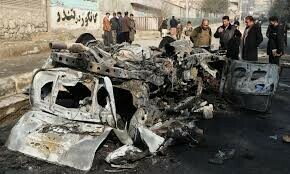Ahead of summits, US tones down war games with S. Korea
South Korea — Spring on the Korean Peninsula is normally the season of D-Day-style beach landings with big guns thumping in the distance and skies crisscrossed by the contrails of fighter aircraft.
But as the North and South prepare for their first summit in more than a decade this Friday, there is something different in the air: the hope of detente. Or at least of a much-needed respite.
Korea has for decades been the site of the world’s largest annual military maneuvers between the U.S. and its ally South Korea. This year, the exercises have been postponed, scaled back, probably shortened and certainly toned down. They have not, however, been canceled. Here’s why:
This year’s exercises began on April 1 and are expected to continue through the end of the month, possibly longer.
Normally they begin in March or earlier.
At their height in the late 1980s, 200,000 troops participated in Team Spirit, making them the largest annual maneuvers in the world. The head count for Foal Eagle/Key Resolve, as the exercises are known today, is lower, but the military assets and the kind of training involved are fine-tuned for the outbreak of a new Korean war and the possible scenario of a takedown of the Kim Jong Un regime itself.
The exercises often feature the latest and most capable weapons the U.S. military has to offer. This year it was the USS Wasp, an amphibious assault ship, which joined in the exercises for the first time.
The Wasp is capable of carrying F-35B stealth fighter jets, which can make vertical takeoffs and landings. The jets are especially sensitive for North Korea because they would likely figure into any attack in its territory, including precision “decapitation” strikes on Kim and his top lieutenants.
The USS Carl Vinson aircraft carrier and its battle group, which joined in last year and drew a threat of “merciless, ultra-precision strikes” from the North, were absent. Weather also reportedly squelched plans for the two sides to stage a D-Day-style landing operation near the coastal city of Pohang.
The lower-key exercises have so far generated nothing like the heated threats of last year.
But as a reminder of the underlying tensions, training to evacuate Americans from South Korea during a contingency was also held this month, though not formally part of the Foal Eagle program. To augment computer simulations and reflect the possibility of a larger battle area, about 100 volunteers were flown from bases in the South all the way to the U.S. mainland, instead of only flying to Japan as they had in previous drills.(AP)





